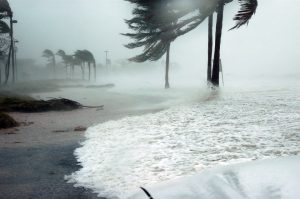With cyclone season approaching in  the southern hemisphere, emergency managers will be thinking about a big one that might lead to evacuations. And it appears that local information is the key to informed evacuation decisions.
the southern hemisphere, emergency managers will be thinking about a big one that might lead to evacuations. And it appears that local information is the key to informed evacuation decisions.
What makes people evacuate or not? And who leaves and who stays?
Newly published research from Texas A&M University and the University of Washington, Seattle, investigates evacuations leading up to Hurricanes Katrina and Ike. The research gives some clues on factors that affect the evacuation decision making and who does what.
Key points from the research by Huang, Lindell and Prater were:
- Expected personal impact is the biggest predictor of a person evacuating
- Older people are more likely to underestimate the speed of the arrival of the storm
- Women are more sensitive to cues of all types and are more likely to want to evacuate given the right information relating to the risk they face
- Home ownership does not affect the decision to evacuate, but people with higher incomes and levels of education are more likely to evacuate
- News media is an important source – and if people accessed any news media, they were likely to have accessed other sources as well
- Memory of false alarms will discourage evacuations, but if people are assured that this is because of the unpredictability of the storm, and not because information will be withheld or errors made by agencies, they will evacuate
- Only official warnings, the area people live, expected wind impacts and concerns about obstacles to evacuation will lead directly to an evacuation decision – demographic factors, news media, social and environment cues and hurricane experience all need further mediation to result in an evacuation decision
- People were preoccupied with wind speed, overlooking the potential for storm and tidal surges into their community, possibly as a result of the focus of official information, which provided scant details on flooding
The biggest take home from this is that the storyline that needs to be built about how the cyclone will affect individuals at a local level.
This puts the spotlight on the importance of local spokespeople who can describe the potential impact in local communities – an approach that contradicts current practice in some areas, particularly in Australia.
A second point is reinforcement of current agency practice to use as many channels to get information to the community as possible – if people use conventional media and their online forms, they are more likely to tap into other channels and sources.
And who evacuates?
The answer is mostly found in the places people live – their level of risk and the perception of the threat will cause people from some geographic areas and residence types to evacuate. This probably leads to fewer older people evacuating because of their tendency to think they have more time.
People who have access to information from local emergency managers who have local knowledge, and because of this are trusted and credible, are also more likely to evacuate.
So it all comes back to the need for a community-based approach to disaster management.
Barbara Ryan is a disaster communication researcher at the University of Southern Queensland in Toowoomba, and teaches crisis and disaster communications in the the Graduate Certificate of Business. She is currently researching how people receive and react to official communications in a bushfire.

